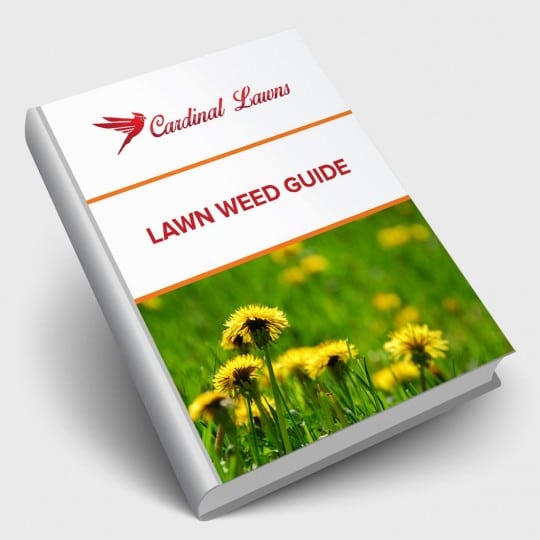Types of Garden Weeds
What to Know Before They Grow
Posted
May 11, 2023

There are summer weeds and winter weeds. Some weeds come back every year and some stick around for a short time. No matter what types of garden weeds you’re dealing with, there is a way to deal. Learn more about which weeds are which and what to do about them.
Types of Garden Weeds
Like all living things, different weeds have varying life cycles. Understanding them can help when it comes to controlling the spread of certain weeds throughout your garden. Weeds can be categorized into three main groups:
- Annual. Like other annual plants, these weeds germinate, flower, and die within a year. They’re not guaranteed to return unless the seeds spread the following year.
- Biennial. These weeds have a two year cycle. They typically germinate and grow the first year without flowering. It’s not until the second year that you may notice the flowering stalk. Consider this their last hurrah since they tend to die off after they bloom.
- Perennial. Plants that return year after year are great for a low-maintenance garden—unless they’re considered weeds. These hardy plants are able to store enough food to survive the winter and return in the spring.
Now that you know how long some weeds last, let’s look at when to expect these weeds to show up.
Types of Annual Weeds
Even though these weeds may only last a year, there are two different types that show up in each season.
Summer annuals. As soon as the weather starts to warm in the spring, these weeds start to germinate. They continue to grow throughout the summer and can withstand the harsh temperatures better than most grasses—making them a tough weed to manage. Crabgrass is considered a summer annual weed, which is why you’ll find it popping up in bare spots of your lawn or where the grass is weaker. Once the first frost hits, summer annuals will die, but that doesn’t mean they won’t return if the conditions are right.
Winter annuals. You know these weeds are tough since they can grow when most plants die. They start to germinate in the early fall and survive throughout the winter. They’ll flower and seed before dying the following summer. Chickweed and annual bluegrass are two examples of these cold-loving weeds.
Knowing when these weeds germinate help you determine when to use weed control products. Help prevent germination of summer annuals by targeting them in the spring, and battle winter annuals by applying preventative products in the late summer or early fall.
Types of Perennial Weeds
Not all perennial weeds are the same either. They may all have a habit of returning year after year, but they can be classified into two different groups.
Simple perennials. These are those independent weeds that you’ll see growing on their own. While some may pop up close to another, they have separate root systems. Dandelions fall in this category. They spread by seed and can grow deep taproots that allow them to thrive and return year after year.
Spreading perennials. As the name suggests, these weeds spread out with horizontal stems that can quickly take over your lawn or garden. Ground ivy and clover are some examples of plants that grow this way. While they’re considered weeds, some gardeners grow them on purpose for their ability to quickly cover an area.
Since these weeds tend to return every year, preventative measures are needed on a regular basis as well. Even if you stop the spread of these weeds one year, it’s best to stay vigilant to prevent their return.
Type of Weed Control
Just as there are many different types of weed, there are many different types of weed control. Knowing when to use these methods is the key in effective treatment. Here are some of the main weed control methods:
- Mowing. Maintaining a regular mowing schedule can help keep your lawn healthy and lush. This alone is one way to prevent weeds from emerging. However, cutting your lawn too short can weaken the grass, which may lead to weeds popping up in bare spots.
- Hand-pulling. Pulling a shallow, annual weed out of the ground is easier than an established perennial that’s formed a deep taproot. Any weed you pull needs to be removed with the root to prevent its return. Mulch. Spread a few inches of mulch over your garden in the spring to help prevent new weeds from popping up.
- Herbicides. Some gardeners spread a layer of granular herbicide before mulching to act as a first line of defense for weeds. There are also pre-emergent weed control products formulated for your lawn and garden to apply before weeds germinate. The timing depends on which weed you’re trying to treat. Typically, spring and fall are the two seasons when pre-emergent products are used most often. Post-emergent products are also available to spot treat any weed that survives preventative measures.
Whether you’re dealing with a summer annual or spreading perennial, the first step in weed control is identifying the type of weed and becoming familiar with its lifecycle. This helps you determine the best time to prevent and treat the specific types of garden weeds. Since timing can change from season to season, it helps to have a lawn and garden professional on your side to manage maintenance. Contact Cardinal Lawns to help you plan weed prevention around your home. Without weeds in your yard, you have more time to enjoy your landscape in any season.

Download Your FREE Lawn Weed Guide
Before weeds take over your yard this season, learn to identify and prevent them in the first place. Keep your lawn looking great all year!